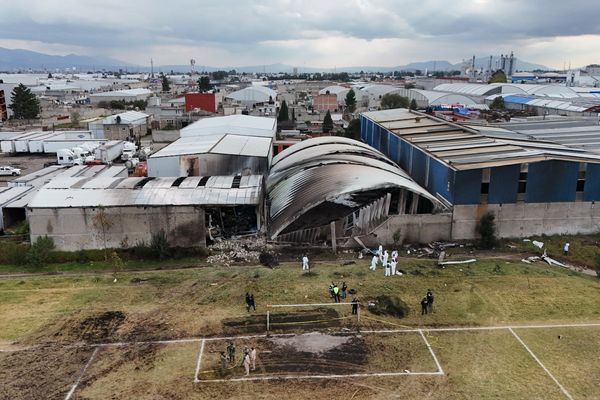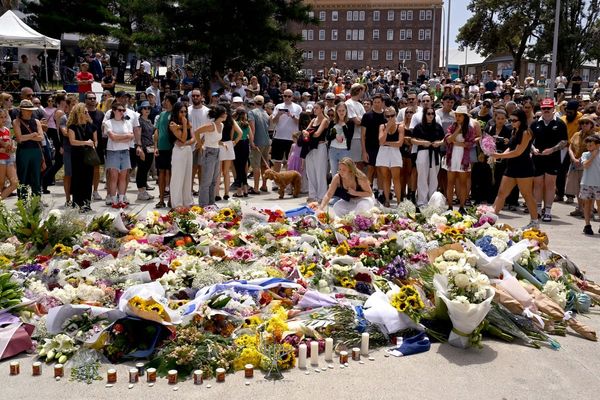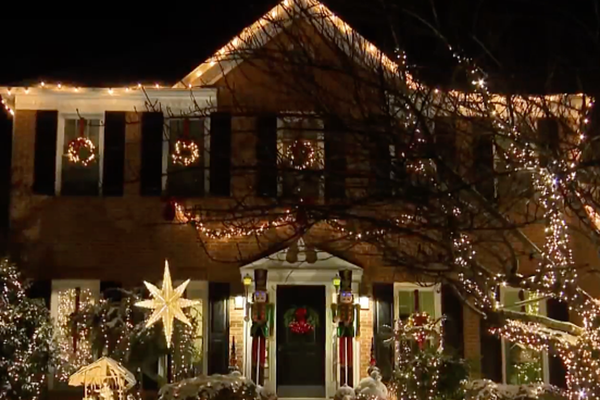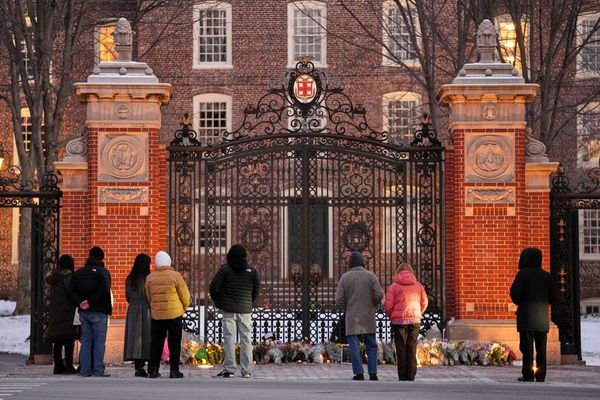
Ashleigh-Sue Chatters was sketching designs for her butterfly tattoo in the weeks before her death.
Having struggled with mental illness since her teenage years, the 28-year-old Palawa woman told her mother the delicate insect planned for her upper arm was an ode to her will to live.
“To her, the butterfly was a symbol of survival and that she hadn’t given up on herself yet, even though the system had given up on her,” her mother Tara Chatters, tells Guardian Australia.
Ashleigh had spent numerous inpatient stints in Victoria’s burdened mental health system. In February she was admitted to Dandenong hospital’s psychiatric unit, in Melbourne. She took her own life there four days later on 25 February.
Her family had hoped she was safe in hospital. Now they are left with questions about the hospital’s duty of care, and anger at systemic failures in the mental health system for First Nations Australians. The family are pushing for a coronial inquest.

Ashleigh’s death is part of alarming increase in First Nations suicide in Victoria. The latest data from the state coroner revealed 35 Indigenous Victorians took their own life last year, a 75% increase, despite a drop in suicide in the state’s broader population. It is a trend that is also replicated nationally, where the rate of Indigenous suicide has nearly doubled in the past decade.
Race in the mental healthcare system
Tara raised Ashleigh as a single mother in her home town in Tasmania and later Melbourne when the family relocated in 2014. Ashleigh, who received a disability support pension, was diagnosed with Fragile X – a genetic condition that is a common cause of intellectual disabilities and autism – as a child.
Tara long suspected Ashleigh had autism but struggled to get a referral for a diagnosis. Instances of non-verbal communication were often interpreted as a sign she was disengaged with treatment.
“Sometimes in the silence people are speaking very loudly,” Tara says.
Ashleigh had complex mental health needs and had been diagnosed with schizophrenia, PTSD, anxiety, childhood schizophrenia and borderline personality disorder over the years.
But Tara believes the biggest barrier her daughter faced was systemic racism in the mental health sector that undermined her ability to get culturally appropriate treatment.
“She was labelled just another black fella. They thought well, this is just how they are and it’s a waste of time helping her,” Tara says.
“They would look at her as an Aboriginal girl and think she was a drug addict even when the test results didn’t show that.
“I don’t want another Aboriginal girl to die because people just look at her like she’s not worth saving.”
Tara recounts numerous times when Ashleigh’s requests to collect leaves from outside to use in an artwork or finger paint – as her grandmother had taught her as a child – were rejected by staff at an inpatient mental health facility in Melbourne.
“If Ashleigh brought up anything spiritual, like the land and healing, she’d be saying stuff that wouldn’t make sense to them,” Tara says.
“They treat everyone like white fellas when you’re on a mental health ward. If they had more of an understanding of Indigenous culture her mental health would have improved a lot faster.”
Annette Vickery, a Gunditjmara woman and the chief executive of Thirrili – an Indigenous service that provides support to families affected by suicide – tells Guardian Australia there are not enough Aboriginal community-controlled mental health services in Victoria, meaning Indigenous people often come up against “systemic barriers” and “unconscious biases” in the system.

“Standard mental health assessments don’t understand intergenerational trauma and the impacts on mental health and the different resilience that comes from living in disadvantage,” she says.
Why wasn’t Ashleigh on suicide watch?
Last year’s scathing royal commission report concluded Victoria’s mental health system was “crisis-driven” rather than preventive.
Tara says calling the police was frequently the only way to get her daughter admitted to an inpatient psychiatric facility, despite police sometimes making assumptions that a mentally unwell Indigenous person is drunk or abusing substances.
A week before she died, Ashleigh spent the night in Monash Medical Centre’s emergency department in an attempt to get admitted. She told doctors she could not keep herself safe but was sent home, despite self-harming there.
Four days before her death, Ashleigh was admitted to Dandenong hospital’s psychiatric ward after calling police.
Later, Tara recalls feeling a sense of dread after calling the hospital and being told her daughter’s nurse could not be located. Four hours later, a resuscitation specialist called to inform her Ashleigh had died.
“I know for a fact that if I had kept her home that night, she’d still be alive,” Tara says.

“I’m scared someone else will lose their child in this way.”
Tara has questions she believes only a coronial inquest can answer. She wants to know why Ashleigh wasn’t on suicide watch, how frequently her daughter was being checked on and why she struggled to get admitted in the first place.
Monash Health – which includes Dandenong hospital – did not respond to questions when contacted by Guardian Australia.
The Victorian government committed to adopting the full suite of recommendations from the royal commission’s inquiry, including creating an Aboriginal social and emotional wellbeing centre to create culturally appropriate mental health services.
But as the reform takes place, frontline Indigenous mental health workers say their aim is keeping their communities alive as the sector is rebuilt.
Tara, who is planning to travel to Tasmania to scatter Ashleigh’s ashes, says as well as culturally informed treatment for Indigenous communities, the mental health sector must prioritise families’ involvement in treatment, and focus on supporting carers who are trying to save their loved ones.
“You’ve got to have a backbone for people to stand strong. Everyone’s just falling over, from the person who is unwell to the people standing behind them.”
In Australia, the crisis support service Lifeline is 13 11 14. Indigenous crisis hotline 13 YARN 13 92 76.In the US, the National Suicide Prevention Lifeline is 1-800-273-8255. In the UK, Samaritans can be contacted on 116 123. Other international suicide helplines can be found at befrienders.org







